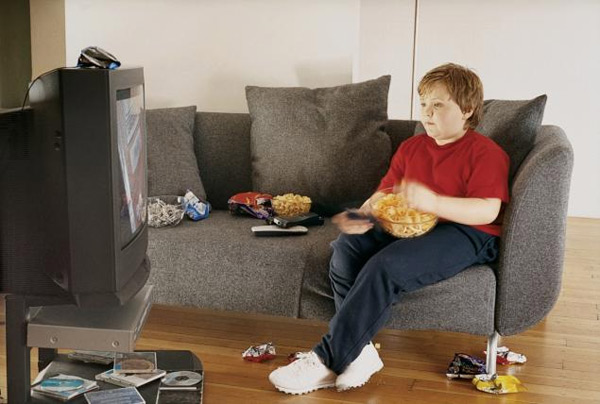
Fruits and vegetables are often displayed in the popular Swedish children’s TV show Bolibompa, but there are also plenty of high-sugar foods. A new study from the University of Gothenburg explores how food is portrayed in children’s TV programmes as well as the link between young children’s TV viewing, dietary habits and weight status.
Steingerdur Olafsdottir’s doctoral thesis focuses on the presence of food in the popular Swedish children’s TV show Bolibompa. Healthy foods dominated in the Swedish-produced parts of the show, whereas the other parts also displayed high-calorie and low-nutrient foods. Olafsdottir analysed all foods and drinks presented in about 25 hours of material broadcasted over a period of five months, along with the context in which the food items were displayed or referred to.
Cookies, candy, ice cream
Fruits and vegetables were shown quite frequently in the show, although usually more often in the background. One out of every five food items displayed was high in calories and low in nutrients, such as cookies, candy and ice cream. These types of food were often displayed actively, by somebody eating or holding it. Moreover, they were more commonly shown together with children than with adults. ‘This means that there’s potential for a more health-promoting approach in the production of TV shows for children.’ says Olafsdottir.
Exposure to commercials
Olafsdottir also studied the connection between young children’s screen habits, dietary habits and weight status. She found an association between children’s TV viewing, in terms of both time in front of the TV and exposure to commercials, and consumption of sweet beverages. Children whose parents did not limit their exposure to TV commercials had a twice as high likelihood of drinking sweet beverages on a regular basis compared with other kids. ‘This means that it may be possible to influence children’s eating habits via their TV habits. There was also a link between TV viewing and obesity and the likelihood of increases in BMI and the waist-to-height ratio,’ says Olafsdottir.
Increased likelihood of overweight among children
The thesis is partly based on data from the European research project IDEFICS (Identification and Prevention of Dietary and Lifestyle-Induced Health Effects in Children and Infants), concerning the dietary habits and lifestyle of 2-9 year old children. Eight European countries participated during the period 2007-2010: Sweden, Estonia, Germany, Belgium, Hungary, Italy, Spain and Cyprus. Previous research has shown that TV and computer use may increase the likelihood of overweight and poor dietary habits in children. Different mechanisms behind the links have been presented: sedentary behaviour, eating while viewing and effects of TV commercials.
The study done by University of Gothenburg.